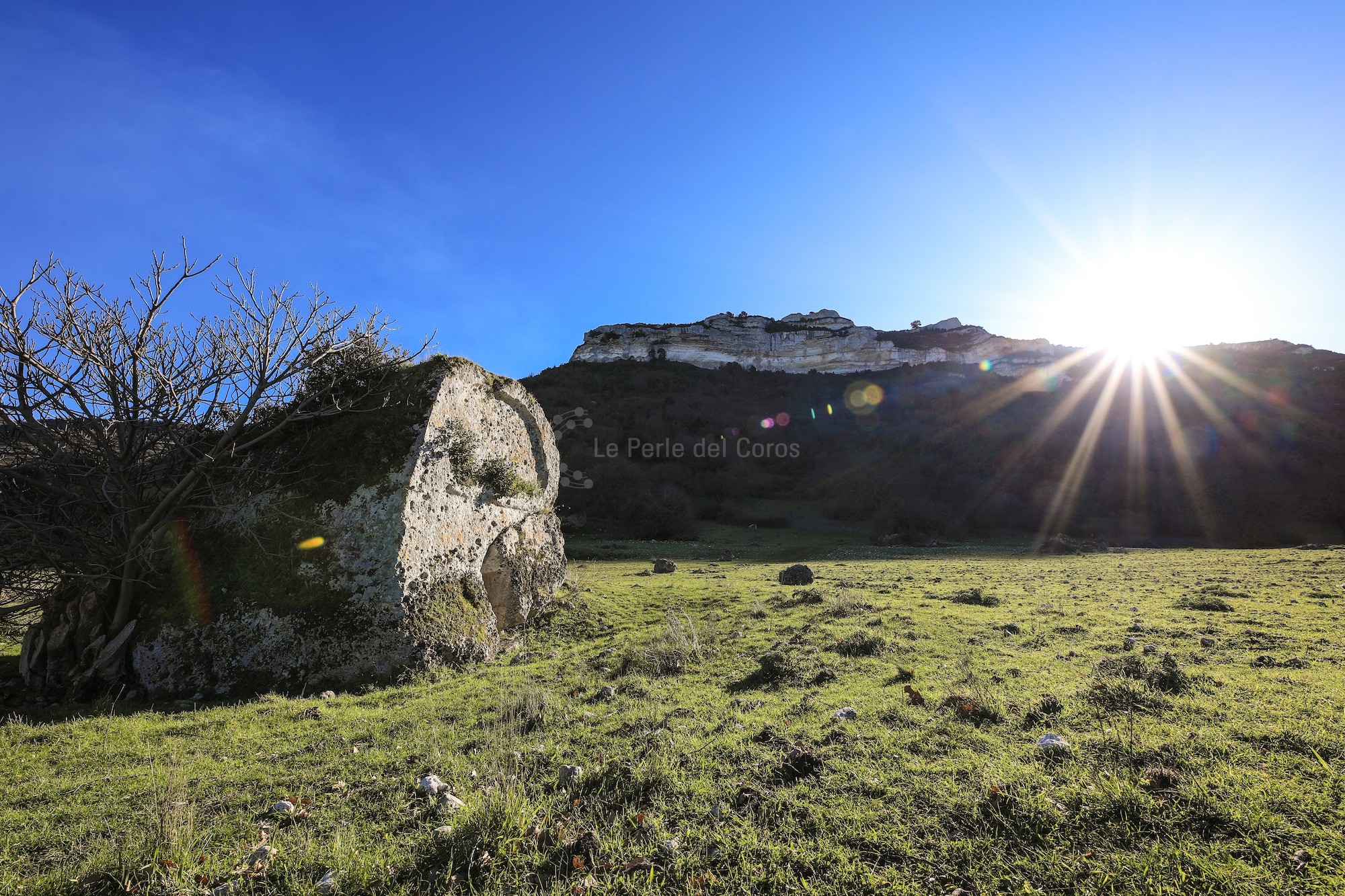
Florinas
Hypogeous tomb of Campu Lontanu
The hypogeous tomb with architectural design at Campu Lontanu was brought to the attention of the “Soprintendenza ai Beni Ambientali, Architettonici, Artistici e Storici”, a Public Organisation that governs the Environmental, Architectural, Artistic and Historical Heritage in Sassari and Nuoro, by Domenico Arru, honorary supervisor of Banari. The dig was conducted in 1975 by Ercole Contu. The tomb was carved from an erratic block of limestone, carved on the outside as well, with a trapezoidal shape. The boulder is isolated in the countryside, in an area with a gentle slope, at the foot of the plateau of Coros. The external outline of the tomb follows the semi-elliptical shape of the stele (tn* stone slab) with a considerable inclination of the stele towards the rear. In the south-eastern corner there is a wide opening due to natural erosion of the rock or to recent tampering. The drawing on the front of the stele consists of a flat embossed frame, outlining a square on the bottom and a lunette on the top. The main doorway is located in the centre of the bottom square. It has a rectangular shape and leads into a short corridor of 1.50 metres, slightly in decline. Its height is halved by a step carved into the rock, that allows you to get past the difference in height relative to the inside tomb floor. The front of the rear part is not decorated and does not have the ornate curved stele, but it is still carved and moulded at the top with an arched profile. It has its own doorway in the middle of the base, smaller in dimensions than the main entrance. An element of great interest is the presence of three holes carved at the top of the extrados of the stele. The internal chamber has an irregular trapezoidal shape; floor and ceiling are inclined from the north-west side towards the south-east side. The main entrance is absolutely out of alignment with the chamber, it is completely moved towards the eastern wall, while the secondary entrance turns out to be more centred. On the side of the north-west entrance, the wall is carved with a curved shape, both its plan and walls, at its base a sort of deep oblong cup, probably remaining from a previous time period. A kilometre away from Tomb I is Tomb II of Campu Lontanu, carved inside a low rock face. The tomb was identified by Ercole Contu during the dig of Tomb I during the 70s. It is characterised by the presence of the typical arched stele as well as by the carved grave on the plateau above; the presence of the exedra remains unconfirmed. The tomb opens a few metres away from the remains of Tomb III, a small one-chamber domus de janas (tn* Neolithic tombs carved into rock called “houses of the fairies”). The stele lacks its upper part with the lunette frame that lies on the ground, a few metres away from the entrance. At the base of the stele is the entrance door. Above the entrance, on the outside, there is a deep engraving of a lunette. The tomb chamber inside is made up of a single room of sub-elliptical shape. It has a single elevated niche on the back wall. Its plan and section are semi-circular, maybe because of successive reuse of the tomb in Late Antique or Early Middle Ages. This is proven by the presence on the right wall of a simple cross carved inside a sort of cartouche made by lowering the rock wall to 0.65 metres from the ground. Another simple cross is found carved on the same side, near the first. A few metres away from the tomb, on the left and on the same rock wall, there seem to be signs of a light lunette-shaped carving: it may be the remains of a tomb that had just started to be dug and was abandoned shortly afterwards because of the extreme degradability of the stone at that point.
Source: “The Tomb of Campu Lontanu in the territory of Florinas” (in Italian), by Paolo Melis, Sardegna Archeologica






